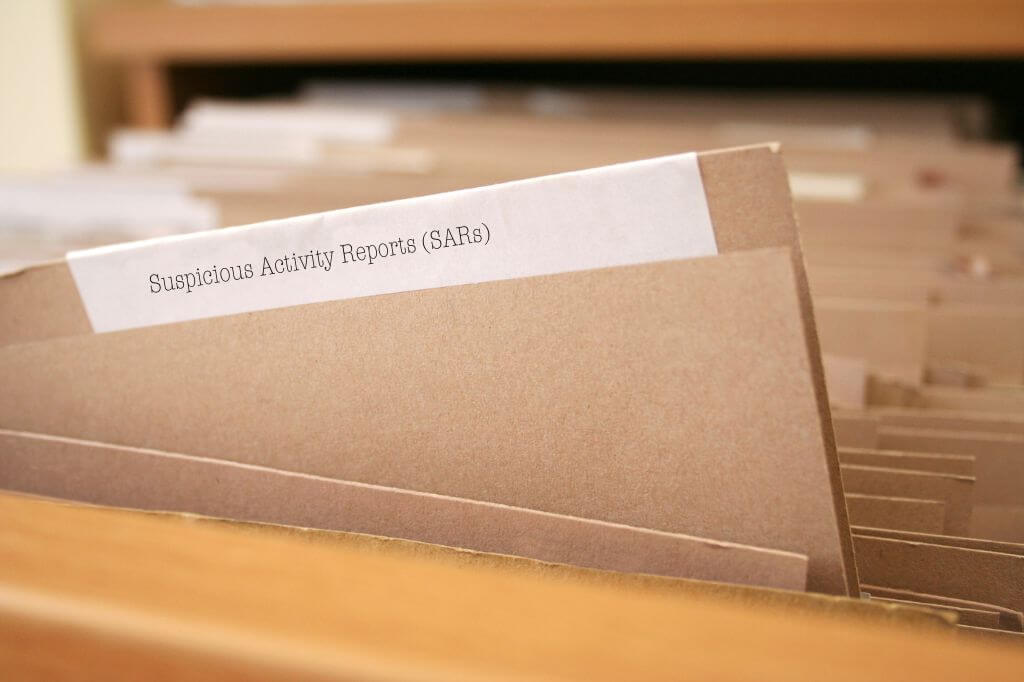Filing Suspicious Activity Reports (SARs) should be a top priority for UK law firms, especially when dealing with situations that raise red flags for potential money laundering. However, the term ‘suspicious’ itself presents a conundrum due to its lack of a precise definition. The ambiguity surrounding suspicion demands clarity in expressing your concerns—not only to protect your firm against legal repercussions, but also to maintain transparency with your clients.
Here, we look at the pitfalls of filing SARs, and provide our top tips to avoid them.
Battling financial crime
The 2022 Suspicious Activity Report (SARs) Annual Report, released by the National Crime Agency (NCA), presented a clear picture of the evolving landscape of financial misconduct, spanning 2020/21 and 2021/22. The report includes the following:
Setting new records
The report reveals an impressive 21% surge in SARs submissions, reaching a staggering 901,255 in the latest financial year. This increase underscores the growing vigilance within regulated sectors against potential money laundering and criminal activities.
Striking back at criminals
SARs continue to play a pivotal role in halting financial crime. An astounding £305.7 million was denied to suspected ‘baddies’ through Defence Against Money Laundering (DAML) requests – a remarkable 120.6% boost from the previous year’s £138.6 million. This surge reflects the effectiveness of SARs in curbing illicit financial gains.
Adapting to changing scenarios
The pandemic and geopolitical events have emphasised the adaptability and significance of SARs. Criminals exploited the pandemic chaos, underscoring the need for accurate financial intelligence – intelligence that SARs provide. The report highlights the role of SARs, in unearthing money laundering linked to sanctioned individuals and their affiliations, particularly following Russia’s invasion of Ukraine.
The potential pitfalls
Despite the crucial nature of SARs, there’s a challenge when it comes to what constitutes as ‘suspicion’. Cases like Lonsdale v National Westminster Bank plc [2018] EWHC 1843 (QB) have added to the complexity of this issue.
David Lonsdale, a property law barrister, found himself entangled in a situation where his bank accounts were frozen due to suspicions of money laundering.
Mr Lonsdale owned several properties and managed the finances of each of those enterprises with seven separate bank accounts; including one account for his earnings as a barrister, and another two joint accounts.
The bank's actions
In March 2017, NatWest decided to freeze one of his joint accounts for eight days while filing a SAR to the NCA. In December 2017, they froze all of his accounts while filing additional SARs. That same month, NatWest wrote to Mr Lonsdale, informing him that they were going to close all of his accounts, offering no explanation or justification.
Of course, if a bank has genuine suspicion of money laundering, they’re entirely within their rights to file a SAR and freeze accounts.
Mr Lonsdale's response
Mr Lonsdale vehemently objected to the closure of his accounts and the accusation of suspicious activity. Mr Lonsdale demanded an explanation, but the bank refused to discuss the issue. As a result, Mr Lonsdale requested disclosure of the SARs, as well as any notes leading to the decision, recorded against his accounts, under the Data Protection Act 1998 (since superseded by DPA 2018).
In line with DPA laws, the bank provided account data, but refused to share the contents of any of the SARs raised against him. This led Mr Lonsdale to file complaints on the grounds of:
- Breach of contract
- Breach of DPA 1998
- Defamation of character
The bank continued to assert that they weren’t obliged to grant access to the contents of the SARs. This led Mr Lonsdale to escalate the case by making an application to the courts.
The case results
When the case was heard, the judge found in favour in Mr Lonsdale’s application to access the content of the SARs.
The judge stated that suspicion must exceed mere fanciful possibility and acknowledged the absence of a requirement for suspicion to be ‘clear’ or ‘firmly grounded and targeted on specific facts’.
What we learned
The lack of a formal legislative definition for ‘suspicion’ has led to confusion and subjectivity. However, the judge’s response implies that suspicion holds a subjective nature, although it must be genuine.
NatWest was within its rights to take action, as banks can freeze accounts if genuine suspicion exists. However, this case highlighted the need for transparent communication and well-founded suspicions.
It establishes that, in some circumstances, clients may be legally entitled to view a SAR made about them, which could, potentially, lead them to bring a defamation claim against the MLRO if that suspicion turns out to be damaging and incorrect.
10 tips to avoid the pitfalls of SARs
In line with advice from the National Crime Agency (NCA) and the insights from the Lonsdale case, here are ten effective ways to navigate the potential pitfalls when reporting suspicious activity:
1. Clear and concise language
Aim for simplicity over legal jargon. Remember, the ‘reasons for suspicion’ section of the SAR limits your input to 8,000 characters, which translates to about 1,500 words. Clarity is your best ally.
2. Precise reasoning
When expressing your suspicion of money laundering, provide a comprehensive narrative. Address the fundamental questions: Who? What? Where? When? Why? How? Leaving no room for ambiguity.
3. Thorough details
Don’t shy away from specifics. When identifying individuals and businesses involved, include as much detail as possible. If suspected criminal property is in the mix, ensure it’s outlined with precision while adhering to privilege guidelines.
4. Detailed information
Elaborate on every piece of information that contributes to your suspicion. Clearly explain how you encountered this information, creating a transparent trail that others can follow.
5. Distinguish facts from suspicions
Separate hard facts from suspicions. It’s essential to convey what you definitively know from what you suspect. This distinction adds clarity to your report.
6. Chronological sequence
Create a chronological timeline of events that substantiate your suspicion. Be meticulous with dates, providing a clear sequence that supports your case.
7. Justify suspicion
Go beyond a mere declaration of concern. Provide the rationale behind your suspicion. For example, if sizeable third-party transfers are involved, outline whether you contacted the client, explain the inadequacy of their response, and detail how the transfer pattern arouses suspicion.
8. Deviation from the norm
Highlight how the flagged activity differs from normal operations within the specific customer or business sector. This contextual insight strengthens the gravity of your concern.
9. Professional involvement
If your SAR implicates a professional enabler (like an accountant or conveyancer), assess their involvement. Specify whether their participation appears witting and provide reasons for your assessment.
10. Clarity on transactions
Clearly describe whether your suspicion pertains solely to transactions or if it extends to the professional behind them. Transparency in this regard bolsters the effectiveness of your report.
Given the potential for vagueness in the term ‘suspicion’, it’s reassuring to know that The Law Commission is working to provide clearer guidance on what constitutes suspicion. In the meantime, adopting these ten tips will bolster the thoroughness and precision of your SARs.
Get in touch
If you need advice or guidance with AML compliance, we’re here to help you. Simply get in touch with one of our friendly experts today.




